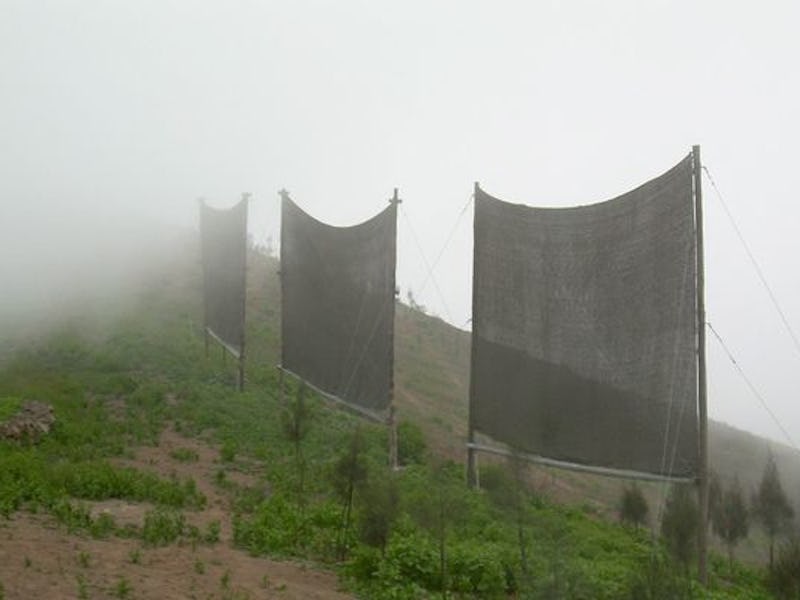How War-Torn Yemen Is Creating Water From Fog
A cheap life saver from an abundant renewable resource.

Between internal battles and mounting casualties caught in the fighting between Saudi Arabia and Iran, Yemen is struggling. Saudi blockades on imports and humanitarian aid has cut the country off from supplies that sustain nearly 14.7 million people who were already suffering from a historic water crisis that could see the country completely dried out as soon as 2017. But what Yemen lacks in money or muscle it makes up for in the one abundant, cheap resource that might save the population: Fog.
Yemen fog harvesters are now reaping thousands of liters of water every day in a country where the average yearly rainfall is just 900 million cubic meters. The devices were installed by a British Columbian nonprofit called FogQuest that began building fog collectors in Yemen in 2003 before turning them over to ICS-Yemen and Vision Hope.
FogQuest describes the project’s background and its early, comparably meager returns:
In early January, 2003, Pablo Osses (then FogQuest Field Operations Manager) was in Hajja to install 26 small Standard Fog Collectors and one Large Fog Collector. When the project is operational, the water from the fog collectors will be stored in community cisterns that ICS has been renovating for the people. This is the traditional means of water storage in the Middle East and many of the cisterns are hundreds of years old. The evaluation lasted from 1 January to 31 March 2003. These are the dry winter months when rainfall is virtually non-existent and the need for water is very high. Sufficient fog water was obtained to justify a large project. The best sites averaged 4.5 L m-2 day-1 over the three-month period. This means that one Large Fog Collector could produce about 180 L per day, which is sufficient clean water to support a family of nine people. In conjunction with ICS Yemen, we will now apply for funding for the operational project. It would be implemented later in 2003. We will also consider field studies in other parts of the country that have the potential to make use of fog collectors to supply water.
Since FogQuest founder Dr. Robert Schemenauer’s groundbreaking work on collecting water from fog in a series of mid-‘90s papers, the standard technique has been to use a mesh fabric roughly one-square meter in size and set up to face the wind. Wind pushes fog into the mesh like air filling a sail, and drops of water accumulate on the surface for collection. Depending on placement and the atmosphere, collectors can pull anywhere from a few liters to gallons of water a day, being most useful in extreme environments with almost no rainfall.
In parts of Chile, fog collectors can produce more water than the average rainfall. That’s a solid return on a mere $15-per-mesh-screen investment.
The low cost has allowed cash-strapped Yemen to toy with the process for nearly a decade without much luck until striking a rich yield in 2013. Today, each of its 200 screens produces a minimum 40 liters a day, a life saving resource for Yemenis in a harsh climate now isolated from normal humanitarian and trade routes.